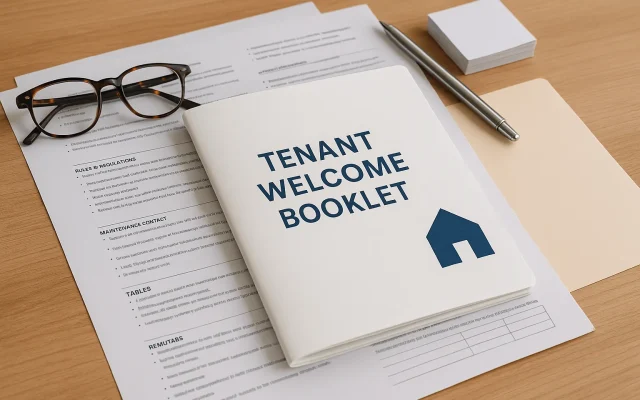Renting an apartment is rarely as easy as browsing listings, picking a favorite, and moving in the next day. In today’s rental market, landlords are selective. Requirements are strict. And if your credit score is low, your income doesn’t hit the threshold, or you’ve never rented before—chances are, you’ll run into barriers. That’s where apartments for rent with cosigner come into play.
Whether you’re fresh out of college, recovering from financial missteps, or simply don’t meet the traditional qualifications, a cosigner might just be the bridge between you and your next lease. But this isn’t a casual favor—it’s a legal commitment. So before you hand over the pen, here’s everything you need to know.
What Is a Cosigner?
Let’s start with the basics.
A cosigner is someone who signs the lease with you and agrees to take on financial responsibility if you can’t. In other words, if you miss rent, they’re legally obligated to cover it. Their name goes on the dotted line next to yours—and in the eyes of your landlord, they’re just as accountable.
Cosigners don’t have to live in the apartment. Some do, especially in roommate setups. But many live elsewhere. Regardless of where they reside, the law sees them as part of the lease.
When You Might Need a Cosigner
Needing a apartments cosigner isn’t a sign of failure. It’s a practical workaround for common financial hurdles. Here’s when it makes sense:
- No rental history: First-time renters often face skepticism. Landlords prefer references, and without them, your application may raise concerns.
- Low or no credit score: A score under 650 can hurt your chances. A cosigner with strong credit can balance things out.
- Eviction history: Even if it wasn’t your fault, an eviction can damage your rental profile. A cosigner shows you have backup.
- Rent exceeds 30% of your income: That ratio is the golden rule. If you’re over it, landlords may worry about your ability to pay consistently.
If any of these situations sound familiar, a apartments cosigner might not just help—you might need one to move forward.
Apartments Cosigner vs. Guarantor: Not the Same Thing
These two terms often get tossed around like they’re interchangeable. They’re not.
- A cosigner shares full responsibility from day one. They sign the lease, can be held liable immediately, and often have access to the property.
- A guarantor, on the other hand, only steps in if you default. They don’t get tenant rights and usually remain in the background unless needed.
In some cases, the landlord will specify which one they require. But if you’re opting into a cosigner voluntarily to strengthen your application, make sure everyone knows what role they’re signing up for.
What a Cosigner Is Actually Responsible For
Think of a cosigner as your financial safety net—but one that gets pulled into the fall.
When someone cosigns your lease, they agree to:
- Cover missed rent—on time and in full
- Pay for property damages you can’t afford
- Handle penalties for late payments
- Comply with the entire lease agreement, including any rules you break
- Be liable for other tenants’ actions if you’re sharing the space
It doesn’t stop there. If you’re hard to reach, your landlord can contact the cosigner directly. That means your communication becomes their responsibility, too.
Who Makes a Good Apartments Cosigner?
Here’s where it gets tricky. You can’t just pick anyone. This isn’t a symbolic signature—it’s a serious contract.
A good cosigner should:
- Be at least 18 (some landlords require 21+)
- Have a stable, verifiable income
- Maintain a credit score above 670 (sometimes 720+ for high-end rentals)
- Own property or have a solid rental history
- Carry a low debt-to-income ratio, ideally under 40%
- Be someone you trust deeply—and who trusts you in return
Parents are common cosigners. So are close friends or older siblings. But no matter the relationship, the conversation needs to be clear and candid. Talk through every possibility. What if you can’t pay rent for three months? What happens if the lease renews automatically?
If that talk feels awkward, it’s a sign to pause and reconsider. Because nothing strains relationships faster than surprise bills and unmet expectations.
The Pros of Renting with a Cosigner
Let’s be honest—there are real advantages to having a cosigner:
- Stronger approval odds: A cosigner can make the difference between rejection and securing the apartment you want.
- Access to better properties: With a strong financial backing, you may qualify for rentals that were previously out of reach.
- Lower security deposits: Some landlords feel more secure with a cosigner and may reduce upfront costs.
- More negotiation leverage: Want to haggle the rent? A cosigner strengthens your position.
- Peace of mind: Knowing you have a fallback can reduce stress—just don’t lean on it unless absolutely necessary.
The Cons (And Why You Should Think Twice)
Of course, there are risks—especially for the cosigner.
- Shared liability: The cosigner is just as on the hook as you are. Any missed payments, damages, or violations affect them, too.
- Credit damage: If rent goes unpaid, it can tank their credit score—not just yours.
- Relationship strain: Financial agreements with family and friends are always delicate. If things go south, the personal fallout can be ugly.
- Hard to remove later: Want to drop the cosigner mid-lease? Not so fast. Unless your landlord agrees or you qualify on your own, they’re locked in until the lease ends.
Bottom line? If you can avoid using a cosigner, it’s often less complicated in the long run. But if you do move forward, handle the relationship like a professional commitment—with transparency and respect.
What If You Don’t Have a Cosigner?
No luck convincing a friend or relative? You still have options.
- Third-party guarantor services: These companies step in for a fee, usually 75%–110% of one month’s rent. But be careful—miss a payment, and you still owe them.
- Higher security deposits: Offering extra upfront might help ease a landlord’s concerns.
- Prepaying rent: Paying a few months in advance can signal financial stability.
- Budget rentals: Opting for more affordable apartments temporarily can help build your rental history and credit.
- Build your credit: Pay off debt. Get a secured credit card. Make small purchases and pay them off monthly. Over time, this adds up.
How to Secure Apartments with a Cosigner (Step-by-Step)
The process is usually straightforward, but details matter. Here’s how it works:
- Confirm the landlord accepts cosigners. Not all do. Get clarity before applying.
- Choose your cosigner wisely. Trust, transparency, and financial readiness are key.
- Submit the cosigner application. Expect credit checks, proof of income, and possibly background checks.
- Sign the lease. Sometimes the cosigner signs a separate document; other times, it’s the same lease.
- Pay the initial costs. That includes deposit, first month’s rent, and possibly pet fees.
- Move in. Congrats! Just remember: your cosigner is still legally tied to your lease.
- Pay rent on time. Every month. Without fail. Communication is key if there’s ever an issue.
Final Thoughts: Should You Use a Cosigner?
Apartments for rent with cosigner can be a life-saver. They open doors—literally and figuratively—for those who need a second chance, a fresh start, or a financial boost.
But they also come with serious obligations.
If you’re considering using a cosigner, take the time to do it right. Have honest conversations. Plan for the worst-case scenario. And once the lease is signed, don’t treat the cosigner as a safety net—treat them as a partner who took a risk for your future.
Own that responsibility.
Because one day, you’ll be the one with perfect credit, steady income, and a pristine rental record. And when someone asks you to cosign their lease—you’ll know exactly what’s at stake.
Frequently Asked Questions (FAQs)
A cosigner is someone who signs the lease with the tenant and agrees to take on legal responsibility for rent payments and damages if the tenant cannot pay. They are treated like a co-tenant, even if they don’t live in the apartment.
You might need a cosigner if you have a low credit score, limited income, no rental history, or a record of eviction. A cosigner helps landlords feel more secure about renting to higher-risk applicants.
A cosigner shares full responsibility from the start of the lease and may have access to the apartment. A guarantor only steps in if the tenant defaults and does not have rights to the rental unit.
A cosigner is responsible for covering unpaid rent, damage repairs, penalties, and any lease violations. They may also be liable for co-tenants if more than one person is on the lease.
Cosigners typically need to be over 18, have a steady income, a strong credit score (usually 670+), a low debt-to-income ratio, and legal residency in the country where the rental is located. They must also pass background and credit checks.
In most cases, a cosigner cannot be removed until the lease ends or the tenant qualifies independently. Some landlords may allow removal if the tenant proves financial stability and the lease is amended.
Yes. Alternatives include using a guarantor service (for a fee), offering a larger deposit, prepaying rent, or applying for more affordable rentals while building credit and rental history.







